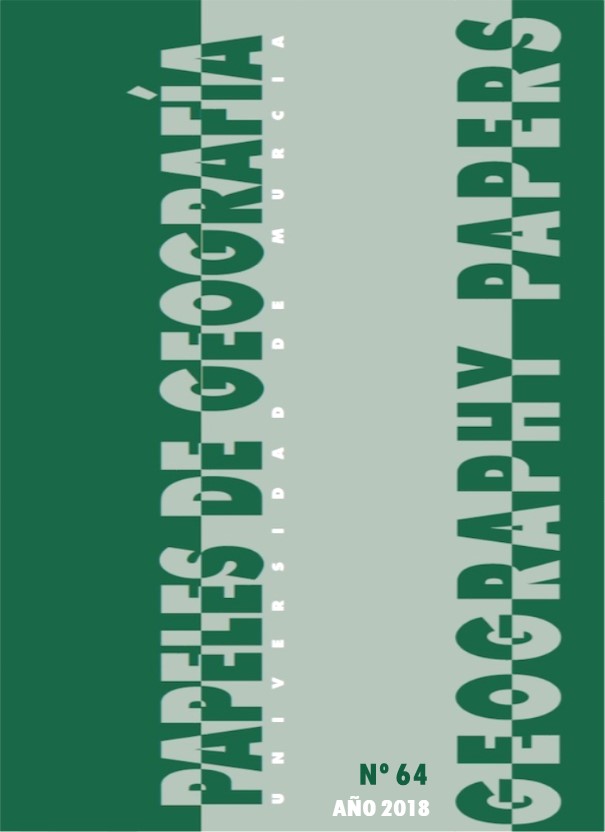El uso de bioresiduos en la restauración de ecosistemas degradados: Estabilidad estructural, infiltración y cobertura vegetal
Agencias de apoyo
- -
Resumen
La transición hacia una economía circular, en la que los recursos se conserven y se reduzca la generación de residuos, es una necesidad real para lograr una economía sostenible. Dentro de ella, cobra particular importancia la gestión de los residuos orgánicos o bioresiduos, tanto por la cantidad que suponen como por las implicaciones ambientales de su mala gestión. El objetivo de este estudio es evaluar los efectos de los bioresiduos como técnicas de restauración en paisajes forestales mediterráneos degradados. Para el mismo, se utilizan dos tipos de acolchados orgánicos generados como subproductos de actividades silvícolas y agrícolas en el entorno más inmediato al área de estudio: (i) bioresiduo tipo acolchado de restos de paja y; (ii) bioresiduo tipo acolchados de astillas de pino carrasco (Pinus halepensis Mill.). Nuestros resultados describen un aumento de la macro-agregación y las tasas de infiltración del suelo, en los primeros en los 24 primero meses, tras la adición de los dos tipos de bioresiduos. Ello ha permitido un mejor aprovechamiento del agua disponible en el perfil del suelo, generando aumento en las tasas de supervivencia. Desde un punto de vista de gestión forestal, tras este estudio, se puede sugerir el uso de bioresiduos en los procesos de restauración de cubierta en áreas forestales mediterráneas.
Descargas
Citas
Albiach, R., Canet, R., Pomares, F., Ingelmo, F. (2001): “Organic matter components, aggregate stability and biological activity in a horticultural soil fertilized with different rates of two sewage sludges during ten years”, Bioresource Technology, 77, pp. 109–114.
Barthès, B., Azontonde, A., Boli, B.Z., Prat, C., Roose, E. (2000): “Field-scale runoff and erosion in relation top topsoil aggregate stability in three tropical regions (Benin, Cameroon, Mexico)”, European Journal of Soil Science , 51, pp. 485–495.
Benedicto-Valdés, G.S., Hidalgo-Moreno, C., Ordaz-Chaparro, V., Sanchez-Hernandez, R., Palma López, D.J. (2005): “Cambios en las propiedades físicas de un suelo arcilloso por aportes de lombricompuesto de cachaza y estiércol”, Revista de la Ciencia y Tecnología de América, 30, pp.775-779.
Benito, E. y Díaz-Fierros, F. (1996): “Descripción de un simulador de lluvia para estudios de erodibilidad del suelo y estabilidad de los agregados al agua”, Anales de Edafología y Agrobiología, 9, pp. 1115-1126.
Boix-Fayos, C. (1999): Procesos geomorfológicos en diferentes condiciones ambientales mediterráneas: el estudio de la agregación y la hidrología de los suelos, Tesis doctoral, Servicio de publicaciones de la universidad de Valencia, pp.329.
Bólker, B.M., Brooks, M.E., Clark, C.J., Geange, S.W., Poulsen, J.R., Stevens, M.H.H., and Wite, J-S.S. (2009): “Generalized linear mixed models: a practical guide for ecology and evolution”, Trends Ecol. Evol., 24, pp. 127-135.
Breton, V., Crosaz, Y., Rey, F. (2016): “Effect of wood chip amendments on the revegetation performance of plant species on eroded marly terrains in a Mediterranean mountainous climate (Southern Alps, Alpes)”, Solid Earth, 7, pp. 599-610.
Brevik, E.C. (2009): Soil health and productivity. In Soils, plant growth and crop production. W. Verheye (Ed.). Encyclopedia of Life Support Systems (EOLSS), EOLSS Publishers, Oxford, UK. (URL: http://www.eolss.net).
Cammeraat, E.L.H., (2004): “Scale dependent thresholds in hydrological and erosion response of a semi-arid catchment in southeast Spain”, Agriculture, Ecosystems and Envioroment, 104 (2), pp. 317-332.
Castro, J., Zamorra, R., Hóndar, J.A., Gómez, J.M. (2002): “The use of shrubs as nurse plants: a new technique for reforestation in Mediterranean mountains”, Rest. Ecol, 10, pp. 297-305.
Cerdá, A. (1998): “Soil aggregate stability under different Mediterranean types”, Catena, 32, pp. 73-86.
CONAMA (2016): “Documento del Grupo de Trabajo de Conama 2016. GT15. El desafío de la gestión de la materia orgánica”, Fundación CONAMA.
DMR (2008): “Directiva 2008/98/CE del parlamento europeo y del consejo de 19 de noviembre de 2008 sobre residuos”, Diario oficial de la unión europea. 312/3 pp.
Duiker, S.W., Flanagan, D.C:, Lal, R. (2001): “Erodibility and infiltration characteristics of five major soils of southwest Spain”, Catena, 45, pp. 103-121.
Edwards, A.P y Bremner, J.M. (1967): “Microaggregates in soil”. Jounal of Soil Science, 18, pp. 64-73.
Elliot, E.T. (1986): “Aggregate structure and carbon, nitrogen and phosphorus in native and cultivated soils”, Soil Science Society of American Proceedings, 50, pp. 627-633.
Ferreras, L., Gómez, E., Torresani, S., Firpo, I., Rotondo, R. (2006): “Effect of organic amendments on some physical, chemical and biological properties in a horticultural soil”, Bioresource Technology, 97, pp. 635-640.
García-Orenes, F., Cerdà, A., Mataix-Solera, J., Guerrero, C., Bodí, M.B., Arcenegui, V., Zornoza, R., Sempere, J.G. (2009): “Effects of agricultural management on surface soil properties and soil–water losses in eastern Spain”, Soil and Tillage Research, 106, pp. 117-123.
García-Orenes, F., Roldán, A., Mataix-Solera, J., Cerdà, A., Campoy, M., Arcenegui, V., Caravaca, F. (2012): ”Soil structural stability and erosion rates influenced by agricultural management practices in a semi-arid Mediterranean agro-ecosystem”, Soil Use and Management, 28, pp. 571-579.
Gómez-Aparicio, L., Zamora, R., Gómez, J.M., Hódar, Castro, J., Baraza., E. (2004): “Applying plant facilitation to forest restoration: A meta-analysis of the use of shrubs as nursery plants”, Ecological Applications, 14 (4), pp. 1128-1138.
Hueso-González, P., Martínez-Murillo, J.F., and Ruiz Sinoga., J.D. (2014): “The impact of organic amendments on forest soil properties under Mediterranean climatic conditions”, Land Degradation and Development, 25, pp. 604-612.
Hueso-González, P., Martínez-Murillo, J.F., and Ruiz Sinoga., J.D. (2016): “Effects of topsoil treatments on afforestation in a dry-mediterranean climate (Southern Spain)”, Solid Earth, DOI:10.5194/se-2016-98.
Hueso-González, P., Martínez-Murillo, J.F., and Ruiz Sinoga., J.D. (2017): “Benefits of straw and pinus mulch as new forest management practices (Mediterranean Forest)”, Cuadernos de investigación geográfica, 43 (1), pp. 189-208.
Hueso-González, P., Ruíz Sinoga, J.D., Martínez-Murillo, J.F., and Lavee, H. (2015):” Overland flow generation mechanisms affected by topsoil treatment: Application to soil conservation”, Geomorphology, 228, pp. 796-804.
IBM Corp. Released. (2012): IBM SPSS Statistics for Windows, Version 21.0. Armonk, NY: IBM Corp
INE (2016): “Nota de prensa del 28 de Noviembre de 2016. Estadísticas sobre la recogida y tratamiento de residuos. Encuesta sobre generación de residuos en la industria. Año 2014”, Instituto Nacional de Estadística.
Kemper, M.D., y Rosenau, R.C. (1986): Agregate stability and particule size distribution. Klute, A. (Eds.), Medoths of Soil Analysis, Part.1. American Sciety of Agronomy. Madison, Wisconsin. pp. 456-442.
Lavee, H., Imeson, A.C., Pariente, S., (1998): “The impact of climate change on geomorphology and desertification along a Mediterranean arid transect”, Land Degradation and Development, 9, pp. 407-422.
Lal, R. (1997): “Residues management, conservation tillage and soil restoration for mitigating greenhouse effect by CO2-enrichment”, Soil and Tillage Research 43, pp. 87-107.
Lax, A., Garcia-Orenes, F. (1993): “Carbohydrates of municipal wastes as aggregation factor soil”, Soil Technology, 6, pp. 157-162.
Ley 22/2011, de 28 de julio, de residuos y suelos contaminados. Ministerio de Agricultura, Alimentación y Medio Ambiente, Gobierno de España.
Lett., L.A. (2014): “Las amenazas globales, el reciclaje de residuos y el concepto de economía circular”. Revista Argentina de Microbiología, 46(1), pp. 1-2.
LUCDEME. (1986). Proyecto LUCDEME. Mapa de suelos 1:100.000. Motril-1055, Ministerio de Agricultura, Pesca y Alimentación, ICONA, Aguilar, J. (Eds.), Universidad de Granada. Facultad de Ciencia, Departamento de Edafología.
Luna-Ramos, L. y Solé, A. (2015): “Erosión acentuada por un acolchado de gravilla en una ladera en restauración en canteras en Almería (España)”, Revista EIA, 12, pp. 13-19.
Madiari, B., Machado, P., Torres, E., De Andagre, A.G., Valencia, L. (2005): “No tillage and crop rotation effects on soil aggregation and organic carnon in a Rhodic Ferrasol from Surthern of Brazil”, Soil and Tillage Research, 82, pp.185-200.
Macci, C., Doni, S., Peruzzi, E., Masciandaro, G., Mennone, C., Ceccanti, B. (2012): “Almond tree and organic fertilization for soil quality improvement in southern Italy”. Journal of Environmental Management, 95, pp. 215-222.
Martínez-Fernandez, J. (1996): “Variabilidad espacial de las propiedades físicas e hídricas de los suelos medio semiárido mediterráneo”. Tesis Doctoral. Universidad de Murcia, pp. 191.
Mataix-Solera, J., Benito, E., Andreu, V., Cerdá, A., Llovet, K., Úbeda, X., Martí, C., Varela, E., Gimeno, E., Arcenegu, V., Rubio., J.L., Campo, J., García-Orenes, F., Badía, D. (2010): ¿Cómo estudiar la estabilidad de agregados en suelos afectados por incendios? Métodos de interpretación de resultados, Cerdá, A. y Jordán, A. (Eds), Actualización de métodos y técnicas para el estudio de los suelos afectados por incendios forestales, FUEGORED, pp. 113-131.
Méndez, A., Gomez, A., Paz-Ferreiro, J., Gascó, G. (2012): “Effects of sewage sludge biochar on plant metal availability after application to a Mediterranean soil”, Chermosphere, 89, pp. 1354-1359.
PEMAR (2013). “Plan estatal marco de gestión de residuos”, Ministerio de Agricultura, Alimentación y Medio Ambiente. Gobierno de España.
Robichaud, P. R., Lewis, S. A., Ashmun, L. E. (2008): “New procedure for sampling infiltration to assess post-fire soil water repellency”, Res. Note. RMRS-RN-33, Fort Collins, CO: U.S. Department of Agriculture, Forest Service, Rocky Mountain Research Station, pp. 14.
Roldan, A., Albaladejo, J., Thormes, J.B. (2001): “Aggregate stability changes in a semiarid soil after treatment with different organic amendments”, Bioresource Technology, 76, pp. 125-129.
Ruiz-Sinoga, J.D., Martinez-Murillo, J.F. (2003): Respuesta hidrológica erosiva de laderas con diferentes usos antrópicos en la vertiente meridional de los montes de Málaga. Bienes, R., Marqués, M.J. (Eds.). Control de la erosión y degradación del suelo. Instituto Madrileño de Investigaciones Agrarias.
Serrada, R. (2000): Apuntes de Repoblaciones Forestales. Fundación Conde Valle de Salazar. Escuela Universitaria de Ingeniería Técnica Forestal. Madrid.
Srinivasarao, C.H., Venkateswarlu, B., Lal, R., Singh, A.K., Kundu, S., Vittal, K.P.R., Patel, J.J., Patel, M.M. (2013): “Long-term manuring and fertilizer effects on depletion of soil organic carbon stocks under pearl millet-cluster bean-castor rotation in Western India”. Land. Degrad. Dev., 25, pp. 173-183.
Tejada, M. y Gonzalez, J.L. (2003): “Effects of the application of a compost originating from crushed cotton gin residues on wheat yield under dryland conditions”. European Journal of Agronomy, 19, pp. 357-368.
Tisdall, J.M., Oades, J.M. (1979): “Stabilization of soil aggregates by the roots systems of ryegrass”, Australian Journal of Soil Science, 17, pp. 429-441.
Tisdall, J.M., Oades, J.M. (1982): “Organic matter and water-stable aggregates in soils”, Journal of Soil Science, 17, 429-441.
WEF (2014). “World Economic Forum. Towards the circular economy: accelerating the scale-up across global supply chains”, WorldEconomic Forum. Geneva, Switzerland.
Yilmaz, E., Alagöz, Z. (2010): “Effects of short-term amendments of farmyard manure on some soil properties in the Mediterranean region – Turkey”, International journal of food, agriculture and environment, 8, pp. 859-862.
Zang, R. (1997): “Determination of sorptivity and hydraulic conductivity from the disk infiltrometer”, Soil Science Society of America, 6, pp. 1024-1030
Las obras que se publican en esta revista están sujetas a los siguientes términos:
1. El Servicio de Publicaciones de la Universidad de Murcia (la editorial) conserva los derechos patrimoniales (copyright) de las obras publicadas, y favorece y permite la reutilización de las mismas bajo la licencia de uso indicada en el punto 2.
2. Las obras se publican en la edición electrónica de la revista bajo una licencia Creative Commons Reconocimiento-NoComercial 4.0 (texto legal). Se pueden copiar, usar, difundir, transmitir y exponer públicamente, siempre que: i) se cite la autoría y la fuente original de su publicación (revista, editorial y URL de la obra); ii) no se usen para fines comerciales; iii) se mencione la existencia y especificaciones de esta licencia de uso.
3. Condiciones de auto-archivo. Se permite y se anima a los autores a difundir electrónicamente las versiones pre-print (versión antes de ser evaluada) y/o post-print (versión evaluada y aceptada para su publicación) de sus obras antes de su publicación, ya que favorece su circulación y difusión más temprana y con ello un posible aumento en su citación y alcance entre la comunidad académica. Color RoMEO: verde.









